The world of Celtic mythology is rich with stories of awe-inspiring sacred sites that hold deep spiritual significance. These sites, ranging from stone circles to hillforts, sacred wells to ancient mounds, and fairy glens to enchanted realms, are steeped in legends and mysteries that have captivated the imaginations of people for centuries. Each site carries its own unique energy and mythical tales, offering a glimpse into the mystical realm of the Celts. In this article, we will explore the importance of these sacred sites and delve into the enchanting stories they hold, shedding light on their significance in Celtic mythology. So, prepare to embark on a journey of wonder and discover the magic that lies hidden within these ancient places.
Contents
- The Importance of Sacred Sites in Celtic Mythology
- 1. Stone Circles and their Spiritual Power
- 2. Hillforts and the Legends They Hold
- 3. Sacred Wells and the Healing Waters
- 4. Ancient Mounds and the Realm of the Sidhe
- 5. Fairy Glens and the Enchanted Realm
- Conclusion
-
Frequently Asked Questions
- 1. What makes a site sacred in Celtic mythology?
- 2. How did the Celts use sacred sites in their religious practices?
- 3. Are there any specific rituals associated with sacred sites?
- 4. What role do sacred wells play in Celtic mythology?
- 5. Were sacred sites connected to specific gods or goddesses?
- 6. Were only humans allowed to visit these sacred sites?
- 7. Did the Celts believe in the power of sacred site alignment with celestial bodies?
- 8. What legends or myths are associated with specific sacred sites?
- 9. Can visiting a sacred site bring about spiritual transformation?
- 10. Are sacred sites in Celtic mythology still revered and visited today?
- References
-
Frequently Asked Questions
- 1. What is the significance of sacred sites in Celtic mythology?
- 2. Are stone circles considered sacred in Celtic mythology?
- 3. What makes Stonehenge a portal to the divine in Celtic mythology?
- 4. How do the Callanish Stones serve as guardians of Celtic tradition?
- 5. Why is Tintagel considered the birthplace of King Arthur?
- 6. What mythical connections surround Dun Aonghasa?
- 7. Why is St. Brigid’s Well considered a place of spiritual awakening?
- 8. What makes Chalice Well the Holy Grail of Glastonbury?
- 9. Why is Newgrange considered a passage to the Otherworld?
- 10. What role does Tara Hill play in Celtic mythology?
- References
- Read More
The Importance of Sacred Sites in Celtic Mythology
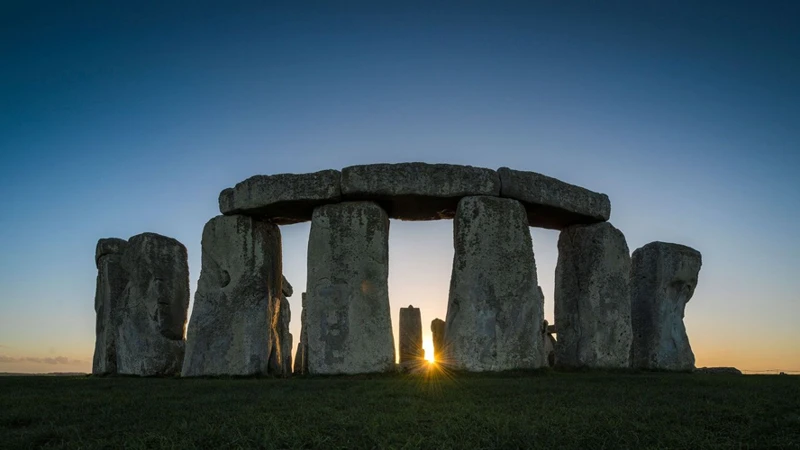
In Celtic mythology, sacred sites hold immense importance as they serve as bridges between the mortal world and the divine realm. These sites are considered to be portals, channels, or meeting points where humans can connect with the spiritual energies and entities of the Celtic pantheon. The Celts believed that these sacred sites were imbued with a unique power that could enhance spiritual experiences, facilitate communication with deities, and even grant access to hidden realms. The worship and reverence of these places were intrinsic to Celtic religious practices, as they were believed to be the dwelling places of gods, goddesses, and mythical creatures. These sites were not merely physical locations but were also revered as symbolic representations of cosmic order and harmony within the Celtic cosmology. Through rituals, offerings, and pilgrimages to these sacred sites, the Celts sought blessings, protection, healing, and spiritual guidance. The connection between the physical and spiritual worlds reinforced their beliefs and allowed them to tap into the mystical forces that shaped their lives. The significance of these sacred sites in Celtic mythology is a testament to the profound connection that the Celts had with the natural world and their deep-rooted spiritual beliefs.
Key Points:
– Sacred sites in Celtic mythology serve as portals between the mortal and divine realms.
– They are believed to enhance spiritual experiences and facilitate communication with deities.
– These sites were revered as symbolic representations of cosmic order and harmony.
– Pilgrimages and rituals at these sacred sites were integral to Celtic religious practices.
– The Celts sought blessings, protection, healing, and spiritual guidance from these sites.
– The significance of these sites reflects the Celts’ deep connection with the natural world and spirituality.
1. Stone Circles and their Spiritual Power
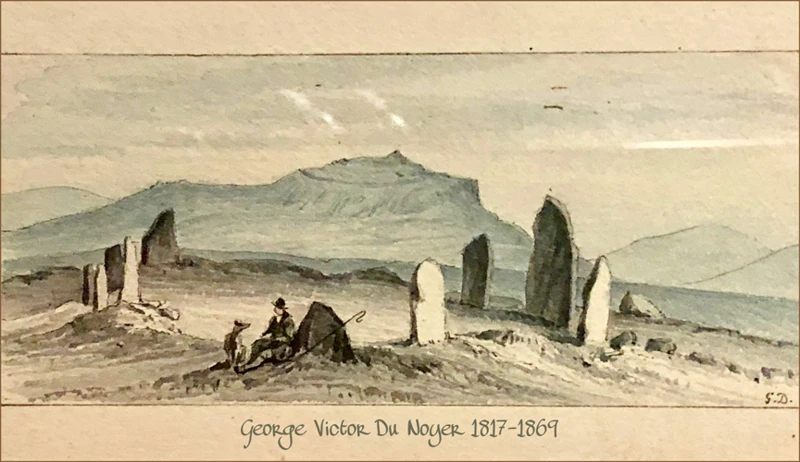
1. Stone Circles and their Spiritual Power
Stone circles are among the most iconic and mystifying sacred sites in Celtic mythology. These circular arrangements of standing stones hold a deep spiritual power and have captivated the imagination of people throughout history. The precise purpose and meaning of stone circles remain elusive, but they are believed to have served as ceremonial or ritualistic sites for the Celts. The stones themselves are seen as conduits for energy, with some theories suggesting that they may have been used for astronomical observations or as calendars, tracking the movements of the sun, moon, and stars. Stone circles are often associated with ley lines, energetic pathways that connect sacred sites, enhancing their spiritual significance. One of the most famous stone circles is Stonehenge, located in England. Stonehenge is believed to have been a portal to the divine, aligning with celestial events such as solstices and equinoxes. It is a place of pilgrimage and wonder, drawing people from all over the world. Another notable stone circle is the Callanish Stones on the Isle of Lewis in Scotland. These stones are considered guardians of Celtic tradition, standing in a cruciform pattern and aligning with the movements of the heavenly bodies. The spiritual power emanating from stone circles continues to enchant and inspire, inviting us to connect with ancient wisdom and tap into the mysteries of the Celtic world.
– Stone circles have deep spiritual power and are mysterious sites in Celtic mythology.
– They are believed to have served as ceremonial or ritualistic sites for the Celts.
– The stones themselves are seen as conduits for energy and may have had astronomical or calendrical functions.
– Stone circles are associated with ley lines, enhancing their spiritual significance.
– Stonehenge is a famous stone circle believed to be a portal to the divine and aligned with celestial events.
– The Callanish Stones are guardians of Celtic tradition and align with heavenly bodies.
– Stone circles invite us to connect with ancient wisdom and explore the mysteries of the Celtic world.
A. Stonehenge: A Portal to the Divine
Stonehenge, one of the most iconic sacred sites in the world, holds profound significance in Celtic mythology. This ancient stone circle, located on Salisbury Plain in England, is believed to be a sacred sanctuary and a portal to the divine. The precise purpose and meaning behind Stonehenge continue to be debated, but its astronomical alignments and intricate construction suggest a deep understanding of celestial energies by the ancient Celts. Some theories propose that Stonehenge served as a place of celestial observation and worship, where the movement of the sun, moon, and stars was intricately intertwined with spiritual practices. The alignment of the stones with significant celestial events, such as the solstices, equinoxes, and lunar cycles, further strengthens the mystical aura of Stonehenge. It is said that during these celestial alignments, the spiritual energy at Stonehenge is heightened, making it an even more potent portal to the divine. The belief in the divine power of Stonehenge extends beyond the physical realm, as it was associated with the interplay between the mortal and spiritual worlds. The towering stones, some weighing up to 25 tons, were believed to provide a connection between the earthly realm and the realms of gods and ancestors. It was a place where the Celts could communicate with deities, seek guidance, perform rituals, and connect with their spiritual heritage. Today, Stonehenge continues to draw visitors from around the world who are captivated by its enigmatic presence and the sense of wonder it evokes. It stands as a testament to the deep reverence and belief in the mystical power of sacred sites in Celtic mythology.
Key Points:
– Stonehenge is an ancient sacred site in England associated with Celtic mythology.
– It is believed to be a portal to the divine and a place of celestial observation.
– The precise purpose and meaning of Stonehenge continue to be debated.
– The stones are aligned with significant celestial events, enhancing its mystical aura.
– Stonehenge was associated with the interplay between the mortal and spiritual realms.
– It was believed to be a place of communication with deities and ancestral spirits.
– Stonehenge continues to be a popular destination, attracting visitors intrigued by its enigmatic presence.
B. The Callanish Stones: Guardians of Celtic Tradition
The Callanish Stones, located on the Isle of Lewis in Scotland, are an extraordinary megalithic complex that stands as a guardian of Celtic tradition. These ancient standing stones form a stone circle and align with celestial movements, reflecting the deep appreciation the Celts had for the cycles of the cosmos. The main circle consists of 13 standing stones, with a larger central monolith known as the “Caledonian Stone.” Surrounding the main circle are other formations, including an avenue of stones radiating outwards. The strategic placement of these stones suggests that the site was meticulously designed to capture the energy and symbolism of the heavenly bodies. It is believed that the Callanish Stones were used by the Celts for rituals, ceremonies, and astronomical observations. The alignment of the stones with the solstices and equinoxes indicates their connection to the changing seasons and agricultural cycles, highlighting the importance of the land and nature in Celtic spirituality. The Callanish Stones have remained a symbol of Celtic tradition and are often visited by modern-day spiritual seekers who are drawn to their mystical ambiance. Standing among these towering stones, one cannot help but feel a profound sense of reverence and connection to the ancient wisdom and beliefs that they represent.
Key Points:
– The Callanish Stones are located on the Isle of Lewis in Scotland.
– They form a stone circle and align with celestial movements.
– The main circle consists of 13 standing stones, with a larger central monolith.
– The site reflects the Celtic appreciation for the cycles of the cosmos.
– The stones were likely used for rituals, ceremonies, and astronomical observations.
– Alignment with solstices and equinoxes indicates their connection to seasonal cycles.
– The Callanish Stones are a symbol of Celtic tradition and draw spiritual seekers.
– Being in their presence evokes a sense of connection to ancient wisdom and beliefs.
2. Hillforts and the Legends They Hold
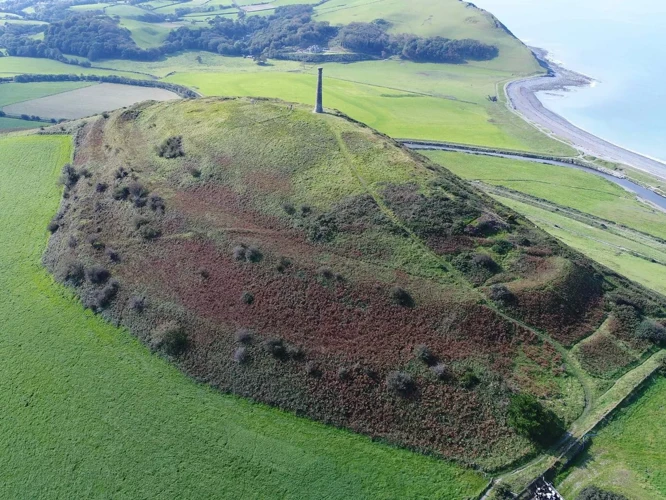
2. Hillforts and the Legends They Hold
Hillforts were significant landmarks in Celtic mythology, representing centers of power and guardians of ancient legends. These fortified structures, situated on prominent hills and elevated terrains, played a pivotal role in the lives and beliefs of the Celts. One such legendary hillfort is Tintagel, reputed to be the birthplace of King Arthur. Perched on the rugged cliffs of Cornwall, Tintagel carries with it tales of Arthurian legend, intertwining history and myth. According to the stories, it was here that the fabled King Arthur was conceived, and the fort’s ruins continue to capture the imagination of visitors, evoking the mystique and romance of the Arthurian tales. Another renowned hillfort is Dun Aonghasa, perched on the edge of a cliff on the Aran Islands in Ireland. Its circular stone walls and breathtaking location overlooking the Atlantic Ocean have long been associated with ancient Celtic deities and legends. It is believed that Dun Aonghasa was a place of spiritual significance, where rituals and ceremonies were conducted to honor the gods and seek their favor. Legends tell of heroes and mystical beings who walked the halls of these hillforts, their stories woven into the very fabric of Celtic mythology. Through the exploration of these hillforts, we can delve deeper into the legends and mysteries that they hold, peering into a world where history and mythology intertwine.
Key Points:
– Hillforts were prominent features in Celtic mythology.
– Tintagel, a legendary hillfort, is believed to be the birthplace of King Arthur.
– Dun Aonghasa, perched on the edge of a cliff, holds associations with Celtic deities and legends.
– Hillforts were places of spiritual significance, where rituals and ceremonies were conducted.
– Legends and stories of heroes and mystical beings are intertwined with these ancient hillforts.
A. Tintagel: Birthplace of King Arthur
Tintagel, located in Cornwall, England, is believed to be the legendary birthplace of King Arthur, one of the most prominent figures in Celtic mythology. This dramatic coastal site is steeped in folklore and is said to have been the stronghold of Arthur’s father, King Uther Pendragon. Tintagel Castle, perched on a rugged cliff, adds an air of mystique to the legend. The association of Tintagel with King Arthur comes from the medieval Arthurian tales, which portray it as the birthplace of the legendary king. According to these tales, Arthur’s mother, Queen Igraine, conceived him with the help of the wizard Merlin during her stay at Tintagel. The connection between Tintagel and Arthur serves as an embodiment of the heroic and mystical elements deeply ingrained in Celtic mythology. The site itself exudes a sense of magic and grandeur, with its striking natural landscape and ancient ruins. Visitors can explore the castle ruins, witness the power of the crashing waves below, and envision the legendary Arthurian tale unfolding in this mystical setting.
Key Points:
– Tintagel is believed to be the birthplace of King Arthur, a key figure in Celtic mythology.
– Legends depict Tintagel Castle as the stronghold of Arthur’s father, King Uther Pendragon.
– The association between Tintagel and Arthur originates from medieval Arthurian tales.
– Queen Igraine, Arthur’s mother, is said to have conceived him with the help of Merlin at Tintagel.
– Tintagel’s dramatic coastal setting and ancient ruins contribute to its mystical ambiance.
– Visitors can explore Tintagel Castle, envisioning the legendary Arthurian tale in this magical location.
B. Dun Aonghasa: A Fort of Myth and Legend
Dun Aonghasa, located on the edge of a cliff on the Aran Islands off the coast of Ireland, is a fort steeped in myth and legend. This ancient stronghold is one of the most important archaeological sites in Ireland, offering a fascinating glimpse into Celtic history and culture. Standing proudly at the edge of a sheer drop, Dun Aonghasa is a stone fort surrounded by massive stone walls, circular in shape. The fort is thought to have been constructed during the late Bronze Age or Iron Age and was originally inhabited by a community of Celts who sought protection and security within its formidable walls. According to legend, the fort was named after the mythical figure Aonghas, who was the god of love and youth in Celtic mythology. It is said that Aonghas himself created the fort as a sanctuary for his beloved, Caer Ibormeith, a swan maiden. The fort’s location, perched high on the cliff, adds to its mystical allure, with panoramic views of the vast Atlantic Ocean stretching out before it. Today, Dun Aonghasa continues to be a place of fascination and intrigue, attracting visitors from all over the world who come to explore its ancient walls and immerse themselves in the stories of Celtic mythology.
Key Points:
– Dun Aonghasa is an ancient fort located on the edge of a cliff on the Aran Islands.
– The fort is circular in shape and surrounded by massive stone walls.
– It is believed to have been constructed during the late Bronze Age or Iron Age.
– The fort is named after the Celtic god Aonghas, associated with love and youth.
– According to legend, Aonghas created the fort as a sanctuary for his beloved Caer Ibormeith.
– The dramatic location of Dun Aonghasa adds to its mystical appeal.
– The fort continues to attract visitors who are intrigued by its rich mythology and ancient history.
3. Sacred Wells and the Healing Waters
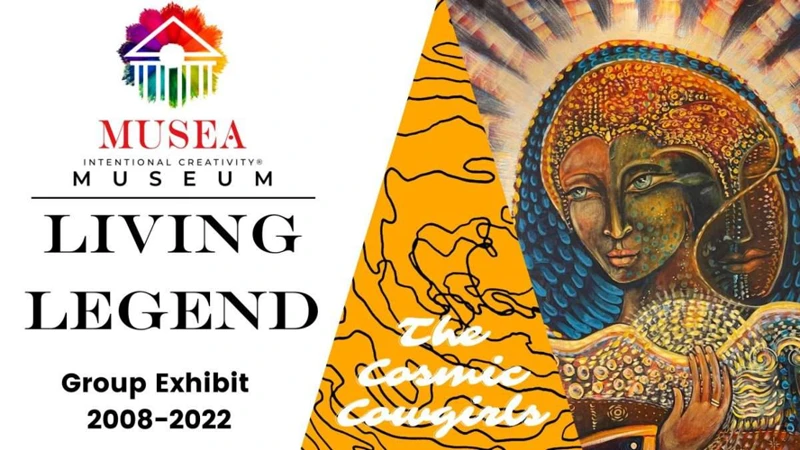
Sacred wells were revered as powerful and sacred sites in Celtic mythology, known for their healing properties and the mystical significance of their waters. These wells were believed to be blessed by the divine and were considered gateways to the Otherworld. The Celts believed that these wells possessed the ability to cure ailments, both physical and spiritual, and bring about transformation and renewal. Many sacred wells were associated with specific deities or mythical figures, adding to their mystical allure. One such example is St. Brigid’s Well, located in Ireland. St. Brigid, a prominent goddess in Celtic mythology, was associated with healing and fertility, and her well was seen as a place of spiritual awakening and rejuvenation. Visitors would partake in rituals involving dipping cloths or personal items into the well’s waters, seeking healing and protection. Another notable sacred well is Chalice Well in Glastonbury, often referred to as the Holy Grail of Glastonbury. The water from this well is rich in iron, giving it a reddish hue and symbolizing the blood of the earth. It is believed to possess powerful healing properties, and visitors come to drink or bathe in its waters, seeking physical and spiritual healing. The reverence for sacred wells and their healing waters is a testament to the belief in the interconnectedness of nature, spirituality, and the power of divine intervention in Celtic mythology.
Key Points:
– Sacred wells in Celtic mythology were revered for their healing properties.
– They were considered gateways to the Otherworld and blessed by the divine.
– These wells were believed to cure physical and spiritual ailments, bringing transformation and renewal.
– Some wells were associated with specific deities or mythical figures.
– St. Brigid’s Well was associated with the goddess St. Brigid, known for healing and fertility.
– Chalice Well in Glastonbury is believed to possess powerful healing properties and is often referred to as the Holy Grail of Glastonbury.
– The reverence for sacred wells reflects the belief in the interconnectedness of nature, spirituality, and the divine in Celtic mythology.
A. St. Brigid’s Well: A Place of Spiritual Awakening
St. Brigid’s Well is a sacred site in Celtic mythology that holds great significance for spiritual awakening and healing. Located in Kildare, Ireland, this well is dedicated to the revered Celtic goddess, Brigid, who represents healing, poetry, and smithcraft. The well is surrounded by a serene and peaceful atmosphere, making it an ideal place for contemplation and introspection. Visitors to St. Brigid’s Well often engage in ritualistic practices such as leaving offerings of cloth, ribbons, or icons tied to the nearby trees, symbolizing prayers and intentions. The water from the well is believed to possess powerful healing properties, and many people come to drink from or bathe in its sacred waters, seeking physical, emotional, or spiritual healing. St. Brigid’s Well is also associated with the Celtic festival of Imbolc, which celebrates the awakening of the earth in early spring and marks a time of renewal and new beginnings. The well serves as a focal point for pilgrims and visitors seeking inspiration, guidance, and a connection with the divine feminine energy represented by Brigid. Its tranquil and enchanting ambiance makes it a place where one can find solace, clarity, and a deeper sense of spirituality. Exploring St. Brigid’s Well allows one to immerse themselves in the rich Celtic mythology and experience the transformative power of this sacred site.
Key Points:
– St. Brigid’s Well is a sacred site associated with the Celtic goddess Brigid.
– It is a place of spiritual awakening and healing.
– Visitors engage in ritualistic practices and leave offerings to convey their prayers and intentions.
– The water from the well is believed to possess powerful healing properties.
– St. Brigid’s Well is connected to the Celtic festival of Imbolc, symbolizing renewal and new beginnings.
– The site provides a serene and peaceful ambiance conducive to contemplation and introspection.
– It serves as a focal point for pilgrims seeking inspiration, guidance, and a deeper connection with divine energy.
– Exploring this sacred site offers a transformative experience and a deeper understanding of Celtic mythology.
Internal link: role of Valkyries
B. Chalice Well: The Holy Grail of Glastonbury
The Chalice Well, also known as the Holy Grail of Glastonbury, is a sacred well located in Glastonbury, England. This mystical site holds deep spiritual significance in both Celtic mythology and Christian legends. The well is believed to be a source of healing and transformation, with its waters said to possess rejuvenating properties. The Chalice Well is associated with the Celtic goddess of sovereignty, the Lady of the Lake, who was said to inhabit the sacred waters. The well is adorned with an iconic cover called the Vesica Pisces, which symbolizes the union of the spiritual and physical realms. Surrounding the well are beautiful gardens filled with vibrant flowers and plants, creating a serene and ethereal atmosphere. The Chalice Well continues to be a place of pilgrimage and spiritual retreat for people from all over the world. Visitors come to seek solace, meditation, and inspiration, drawing on the powerful energies that emanate from this ancient site. The Chalice Well is a testament to the enduring allure of sacred sites in Celtic mythology, where myth and spirituality converge to create an enchanting and transcendent experience.
Key Points:
– The Chalice Well in Glastonbury is known as the Holy Grail of Glastonbury.
– The well holds deep spiritual significance in both Celtic mythology and Christian legends.
– The waters of the well are believed to possess rejuvenating properties.
– The well is associated with the Celtic goddess of sovereignty, the Lady of the Lake.
– The well is adorned with the Vesica Pisces symbol, representing the union of the spiritual and physical realms.
– The surrounding gardens create a serene and ethereal atmosphere.
– The Chalice Well is a popular pilgrimage site and spiritual retreat.
– Visitors seek solace, meditation, and inspiration from the powerful energies of the site.
– The Chalice Well exemplifies the captivating nature of sacred sites in Celtic mythology.
4. Ancient Mounds and the Realm of the Sidhe
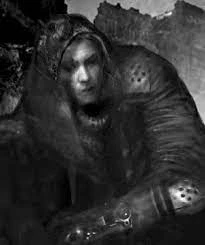
Ancient mounds hold a special place in Celtic mythology as they are believed to be gateways to the mystical realm of the Sidhe. The Sidhe, also known as the fairy folk, are supernatural beings that exist in a parallel world alongside humans. These mounds, known as fairy forts or fairy hills, are considered to be entrances or dwellings of the Sidhe.
One prominent ancient mound is Newgrange, located in Ireland. Built over 5,000 years ago, Newgrange is an intriguing passage tomb that aligns with the winter solstice. This alignment allows a beam of sunlight to penetrate the inner chamber, filling it with ethereal light. The intricate spiral carvings inside the tomb further add to its enigmatic allure. It is believed that Newgrange served as a portal to the Otherworld, where the Sidhe resided. The Celts considered the Sidhe as powerful and sometimes mischievous beings, and connecting with them through the ancient mound was both a reverential and cautionary act.
Tara Hill, another significant ancient mound in Ireland, is associated with the high kings of Ireland. This hill served as the seat of power and authority for these rulers, and it was believed to be a sacred meeting place between the human and fairy realms. Celtic mythology portrays Tara Hill as a place where kings were chosen and where rituals and ceremonies were conducted to ensure the prosperity and protection of the land. The Sidhe were said to reside beneath the hill, adding to its spiritual significance.
The exploration of ancient mounds and the realm of the Sidhe allows us to delve into the mysterious and enchanting aspects of Celtic mythology. These sites and the stories attached to them offer a glimpse into a world where mortals and mythical beings coexisted, where the boundaries between the physical and spiritual realms blurred. By honoring and respecting these ancient mounds, we honor the rich tapestry of Celtic mythology and the interconnectedness between humans and the mystical forces that shaped their beliefs.
Key Points:
– Ancient mounds are gateways to the realm of the Sidhe in Celtic mythology.
– Newgrange, an ancient mound in Ireland, is believed to be a portal to the Otherworld.
– Tara Hill served as the seat of power for the high kings of Ireland and was a sacred meeting place between humans and fairies.
– Ancient mounds provide a connection between mortals and mythical beings.
– Exploring these sites allows us to appreciate the interconnectedness of Celtic mythology and the blending of physical and spiritual realms.
A. Newgrange: A Passage to the Otherworld
Newgrange, located in County Meath, Ireland, is a site of great mystical significance in Celtic mythology. This ancient mound is known as a passage tomb, constructed around 3200 BCE, making it older than Stonehenge and the Great Pyramids of Giza. Newgrange is believed to be a sacred place where the Celts believed the souls of the deceased would journey to the Otherworld. The monument consists of a large circular mound with an inner chamber, accessed through a long passageway. The most remarkable feature of Newgrange is its alignment with the winter solstice sunrise. During the winter solstice, a narrow beam of light penetrates through the roof box above the entrance and illuminates the chamber with a golden glow, symbolizing the rebirth of the sun. This astronomical phenomenon was a powerful symbol of fertility, renewal, and the cycle of life and death for the ancient Celts. The intricate spiral stone carvings found within the chamber further add to the mystical aura of Newgrange. These carvings, known as megalithic art, depict intricate patterns and symbols, thought to represent spiritual or cosmological significance. Exploring the depths of Newgrange is like stepping back in time to the ancient Celtic belief system, where the boundary between the mortal world and the divine was blurred. The existence of such a monument is a testament to the deep reverence the Celts had for the cycles of nature and the interconnectedness of all things. Today, Newgrange stands as a remarkable testament to the ingenuity and spiritual beliefs of our ancient Celtic ancestors.
Key Points:
– Newgrange is a passage tomb in County Meath, Ireland.
– It is believed to be a passage to the Otherworld in Celtic mythology.
– The monument dates back to around 3200 BCE, older than Stonehenge and the Great Pyramids.
– Newgrange aligns with the winter solstice sunrise, allowing a beam of light into the chamber.
– The solstice alignment symbolizes fertility, renewal, and the cycle of life and death.
– Intricate spiral stone carvings within the chamber add to the mystical atmosphere.
– Newgrange reflects the ancient Celtic belief in the interconnectedness of nature and the divine.
B. Tara Hill: Seat of the High Kings of Ireland
B. Tara Hill, located in County Meath, Ireland, holds a special place in Celtic mythology as the legendary Seat of the High Kings of Ireland. This ancient site, also known as Teamhair na Rí, is steeped in history and myth, making it a significant and revered location in Irish folklore. According to Celtic legend, Tara was the seat of power and authority, where the High Kings ruled and conducted their sacred ceremonies. The name “Tara” is derived from the Irish word “Teamhair,” which means “sanctuary” or “elevated place.” It is believed that the hill served as a spiritual and political center, connecting the mortal realm with the divine. In Celtic mythology, the hill was considered a gateway to the Otherworld, a realm inhabited by gods, goddesses, and other supernatural beings. The legends surrounding Tara Hill are intertwined with the stories of famous kings and queens, including the mythical King Lugh, who was said to have established the first Kingship of Tara. As the seat of power, Tara played a crucial role in the ritual inauguration of Irish kings, with the Stone of Destiny, also known as the Lia Fáil, being a central element of these ceremonies. The Lia Fáil was believed to roar when the rightful king touched it, signifying their divine right to rule. Today, visitors to Tara Hill can explore the remnants of ancient ceremonial sites, defensive earthworks, and a stunning view of the surrounding landscape. The site exudes a sense of ancient power and majesty, allowing visitors to connect with the rich mythology and historical significance of the High Kings of Ireland.
Key Points:
– Tara Hill is the legendary Seat of the High Kings of Ireland.
– It served as a spiritual and political center in Celtic mythology.
– The hill was believed to be a gateway to the Otherworld.
– Tara Hill played a crucial role in the inauguration of Irish kings.
– The Stone of Destiny, or Lia Fáil, was a central element of these ceremonies.
– Visitors can explore ancient ceremonial sites and defensive earthworks at Tara Hill.
– The site showcases the rich mythology and historical significance of the High Kings of Ireland.
5. Fairy Glens and the Enchanted Realm

Fairy Glens, also known as Fairy Hollows or Fairy Rings, hold a special place in Celtic mythology as gateways to the enchanted realm of the Fairies. These mystical and enchanting places are often hidden amidst lush green landscapes and secluded groves. According to Celtic folklore, Fairies are supernatural beings that inhabit the Otherworld, a parallel dimension intertwined with our own. The Fairy Glens are believed to be their preferred sanctuaries and meeting grounds. These glens are characterized by their serene beauty, with delicate wildflowers, tinkling streams, and moss-covered rocks creating an ethereal atmosphere. It is said that those who enter a Fairy Glen may stumble upon a secret gathering of the Fairies or witness their whimsical dances under the moonlit sky. Legend has it that time moves differently in the realm of Fairies, and those who are spirited away by the Fairies may find themselves returning to the mortal world after what feels like mere moments, only to discover that years have passed. The Fairy Glens captivate the imaginations of many, as they represent a bridge between the mundane and the magical, a place where ordinary beings can catch a glimpse of the extraordinary. These enchanting sites continue to inspire stories, artwork, and a sense of wonder in those who seek the mystical in the natural world.
Key Points:
– Fairy Glens are gateways to the enchanted realm of the Fairies in Celtic mythology.
– They are hidden sanctuaries believed to be inhabited by supernatural beings.
– Fairy Glens are characterized by their serene beauty and ethereal atmosphere.
– Legends describe secret gatherings and whimsical dances of the Fairies in these glens.
– Time is said to pass differently in the realm of Fairies, adding to their mysticism.
– Fairy Glens represent a bridge between the ordinary and the extraordinary, captivating the imaginations of many.
A. Glen of the Fairies: A Magical Haven
The Glen of the Fairies, nestled in the scenic landscapes of Scotland, is a place of enchantment and wonder. This mystical haven is said to be a gathering place for the fairies, beings of Celtic folklore who are known for their magical powers and mischievous nature. Surrounded by lush greenery, sparkling streams, and ancient trees, the Glen of the Fairies exudes an ethereal ambiance that captivates all who visit. According to legend, the fairies are believed to hold their whimsical gatherings and celebrations in this secluded glen. It is said that on moonlit nights, one can catch a glimpse of their shimmering figures dancing in the moonbeams, their laughter echoing through the air. The Glen of the Fairies is renowned for its serenity and transformative energy. Many believe that spending time in this magical place can awaken one’s inner creativity, intuition, and connection to the natural world. The fairy folklore surrounding this glen adds an element of mystery and intrigue, inspiring tales of encounters with these otherworldly beings. Visitors often leave offerings of flowers, shiny objects, or small trinkets in hopes of attracting the favor of the fairies. Whether one believes in the existence of fairies or sees them as metaphors for the magic of nature, the Glen of the Fairies remains a truly enchanting destination that invites exploration and sparks the imagination.
Key Points:
– The Glen of the Fairies in Scotland is a place of enchantment and wonder.
– It is believed to be a gathering place for fairies, mythical beings of Celtic folklore.
– Surrounded by scenic landscapes, the glen exudes an ethereal ambiance.
– Legend has it that fairies hold whimsical gatherings and celebrations in this secluded haven.
– The glen is known for its serenity and transformative energy.
– Spending time in this magical place is believed to awaken creativity and intuition.
– Fairy folklore adds an element of mystery and intrigue to the glen’s allure.
– Visitors often leave offerings in hopes of attracting the favor of the fairies.
– The Glen of the Fairies remains a destination that sparks the imagination and invites exploration.
B. Doon Hill: The Home of the Fairy Queen
Doon Hill, located in Aberfoyle, Scotland, is renowned as the home of the Fairy Queen in Celtic mythology. This enchanting hill is steeped in legends and folklore, captivating the imaginations of locals and visitors alike. According to the myth, the Fairy Queen and her court reside in the depths of Doon Hill, hidden away from mortal eyes. The hill itself boasts a mystical atmosphere with its lush greenery, ancient trees, and meandering paths, creating an ambiance that feels touched by magic.
The Fairy Queen of Doon Hill is believed to possess great powers and is revered as a guardian of the natural world. It is said that those who visit Doon Hill with pure intentions, respect, and reverence may catch a glimpse of the Fairy Queen or experience her presence. The hill is considered a sacred site where visitors can connect with the realm of the fairies and seek their blessings and guidance.
In addition to its magical association with the Fairy Queen, Doon Hill has also been associated with mysterious phenomena. Strange lights, ethereal music, and inexplicable encounters have been reported by those who have ventured to this mystical location. These anecdotes add to the aura of mystique that surrounds Doon Hill, further fueling its reputation as a place of wonder and enchantment.
To this day, Doon Hill continues to attract visitors who are drawn to its mythical allure. Exploring the paths around the hill and immersing oneself in the natural beauty of the surroundings can evoke a sense of childlike wonder and a connection to timeless legends. It serves as a reminder of the enduring power of folklore and the enduring enchantment of the Celts’ belief in the fairy realm.
Key Points:
– Doon Hill in Aberfoyle, Scotland is believed to be the home of the Fairy Queen in Celtic mythology.
– The hill is associated with magical legends and folklore.
– The Fairy Queen is revered as a powerful guardian of the natural world.
– Visitors with pure intentions can experience the presence of the Fairy Queen.
– Doon Hill is considered a sacred site where visitors can seek the blessings and guidance of fairies.
– Reports of strange phenomena add to the mystical reputation of Doon Hill.
– Exploring the paths and surroundings of Doon Hill evokes a sense of wonder and a connection to Celtic folklore.
Conclusion

In conclusion, the sacred sites of Celtic mythology hold a mystical significance that transcends time and continues to captivate the imagination of people today. These ancient places serve as tangible connections to the spiritual realm, allowing individuals to tap into the power and wisdom of Celtic deities and mythical creatures. The importance of these sites lies not only in their physical existence but also in their symbolic representation of cosmic order and harmony. Through rituals, offerings, and pilgrimages, the Celts sought to establish a profound connection with the divine, seeking blessings, protection, and spiritual guidance. The reverence for these sacred sites demonstrates the Celts’ deep-rooted connection to the natural world and their unwavering belief in the interconnectedness of all things. Exploring the significance of these ancient sites provides a glimpse into the rich tapestry of Celtic mythology, reminding us of the enduring allure and enchantment that lies within these sacred landscapes.
By delving into the stories and legends associated with stone circles, hillforts, sacred wells, ancient mounds, and fairy glens, we gain insight into the profound spiritual beliefs and practices of the Celts. These sites are not only historical relics but enduring symbols of a culture steeped in mythology and reverence for the divine. As we continue to explore and appreciate the importance of these sacred sites, we connect with a deeper understanding of the Celtic worldview and the enduring impact of their legends and traditions. Whether it is Stonehenge, Tintagel, or Newgrange, these sites carry the echoes of a bygone era, whispering tales that continue to ignite our imagination and fascination with the mystical. So, let us embrace the magic of these sacred locations and allow ourselves to be transported to a realm where myth and reality intertwine, where the realm of the divine is just a step away.
In our exploration of Celtic mythology, we have barely scratched the surface of the vast array of sacred sites that dot the Celtic lands. Each site carries its own unique stories, legends, and mysteries, waiting to be discovered and unraveled. So, embark on your own journey of exploration, immerse yourself in the ancient tales, and let the sacred sites of Celtic mythology reveal their secrets to you.
Frequently Asked Questions

1. What makes a site sacred in Celtic mythology?
In Celtic mythology, a site is considered sacred when it is believed to be a portal or meeting point between the mortal world and the divine realm. These sites are often associated with powerful spiritual energies, deities, or mythical creatures.
2. How did the Celts use sacred sites in their religious practices?
The Celts used sacred sites in various ways for religious practices. They would perform rituals, make offerings, and engage in pilgrimages to these sites to seek blessings, protection, healing, and spiritual guidance.
3. Are there any specific rituals associated with sacred sites?
Yes, there were specific rituals associated with sacred sites in Celtic mythology. These rituals could involve offerings of food, drink, or other items to gods or goddesses, as well as prayers, chants, and ceremonial dances.
4. What role do sacred wells play in Celtic mythology?
Sacred wells hold a special significance in Celtic mythology. They are believed to have healing properties and are associated with various deities or spirits. Pilgrims would visit these wells to seek physical or spiritual healing.
5. Were sacred sites connected to specific gods or goddesses?
Yes, many sacred sites in Celtic mythology were associated with specific gods or goddesses. For example, Stonehenge is believed to be connected to the sun god, while St. Brigid’s Well is associated with the goddess Brigid.
6. Were only humans allowed to visit these sacred sites?
No, in Celtic mythology, various beings were believed to inhabit and visit sacred sites, including gods, goddesses, spirits, and mythical creatures. These sites were seen as shared spaces between humans and the divine.
7. Did the Celts believe in the power of sacred site alignment with celestial bodies?
Yes, the Celts had a belief in the power of sacred site alignment with celestial bodies. It was believed that the alignment of these sites with celestial events, such as solstices or equinoxes, amplified their spiritual energy and significance.
8. What legends or myths are associated with specific sacred sites?
There are numerous legends and myths associated with specific sacred sites in Celtic mythology. For example, Tintagel is believed to be the birthplace of King Arthur, while Newgrange is associated with the passage to the Otherworld.
9. Can visiting a sacred site bring about spiritual transformation?
Yes, visiting a sacred site in Celtic mythology is often believed to have the potential for spiritual transformation. The powerful spiritual energy of these sites can create a deeply profound and transcendent experience for individuals.
10. Are sacred sites in Celtic mythology still revered and visited today?
Yes, many sacred sites in Celtic mythology are still revered and visited today. People from all over the world visit these sites to connect with Celtic spirituality, experience their mystical energy, and engage in rituals or ceremonies.
References
- Ancient Ireland – 30 Sacred Sites In Ireland
- Celtic Rituals, Sacred Sites, and Offerings | Apollo’s Raven
- Legendary Places in Ireland – Emerald Isle
Frequently Asked Questions

1. What is the significance of sacred sites in Celtic mythology?
Sacred sites hold great importance in Celtic mythology as they are believed to be places where the divine and mortal realms intersect. They are seen as potent gateways to the spiritual and mythical worlds, with their energy and symbolism playing a crucial role in Celtic traditions and folklore.
2. Are stone circles considered sacred in Celtic mythology?
Absolutely! Stone circles are regarded as sacred spaces in Celtic mythology, believed to be imbued with spiritual power. These ancient structures are thought to facilitate connections with the divine, serving as sites for ceremonies, rituals, and gatherings that honor the Celtic deities and ancestors.
3. What makes Stonehenge a portal to the divine in Celtic mythology?
Stonehenge is considered a portal to the divine in Celtic mythology due to its mysterious construction and astronomical alignments. It is believed to be a place where mortals can come closer to the Otherworld and communicate with the gods and spirits. The stones’ arrangement is seen as a sacred representation of the cosmic order.
4. How do the Callanish Stones serve as guardians of Celtic tradition?
The Callanish Stones, located on the Isle of Lewis in Scotland, are seen as guardians of Celtic tradition. These ancient standing stones are believed to have been erected for ceremonial and ritualistic purposes. They serve as a reminder of the ancient Celtic customs and beliefs, preserving the sacred heritage of the Celtic people.
5. Why is Tintagel considered the birthplace of King Arthur?
Tintagel, a hillfort located in Cornwall, is associated with the legend of King Arthur. According to Celtic mythology, it is believed to be the birthplace of this legendary figure. The mystical atmosphere and historical significance of Tintagel have contributed to its association with the Arthurian legends, making it a popular destination for Arthur enthusiasts.
6. What mythical connections surround Dun Aonghasa?
Dun Aonghasa, an ancient fort situated on the Aran Islands in Ireland, is steeped in myth and legend. It is believed to have been the stronghold of the mythical Fir Bolg tribe and is associated with the tales of ancient warriors and heroes. The dramatic cliff-top setting adds to the enchanting aura of Dun Aonghasa.
7. Why is St. Brigid’s Well considered a place of spiritual awakening?
St. Brigid’s Well, located in County Kildare, Ireland, is a sacred site associated with the Celtic goddess Brigid and the Christian saint of the same name. It is believed to possess healing powers and is considered a place of spiritual awakening. Visitors often perform rituals and leave offerings to seek Brigid’s blessings and guidance.
8. What makes Chalice Well the Holy Grail of Glastonbury?
Chalice Well, situated in Glastonbury, England, holds a special place in Celtic mythology. It is believed to be the sacred resting place of the Holy Grail, the iconic cup associated with the Last Supper of Jesus Christ. Pilgrims visit Chalice Well to seek healing and spiritual nourishment from its legendary healing waters.
9. Why is Newgrange considered a passage to the Otherworld?
Newgrange, an ancient mound located in County Meath, Ireland, is renowned for its mystical significance. Its complex architecture and astronomical alignments suggest it was not only a burial site but also a place of spiritual significance. Newgrange is believed to be a passageway to the Otherworld, a realm inhabited by the Sidhe (fairies) and ancestral spirits.
10. What role does Tara Hill play in Celtic mythology?
Tara Hill, also known as the Hill of Tara, holds great importance in Celtic mythology. It was the seat of the High Kings of Ireland, serving as a sacred site for coronations and religious ceremonies. Tara Hill is closely associated with Irish mythology and folklore, being regarded as a meeting place between the mortal and divine realms.
References
- The Ritual Significance of Holy Springs and Wells in Celtic …
- Sacred Sites of Irish Mythology – The Irish Pagan School
- Ancient Ireland – 30 Sacred Sites In Ireland







